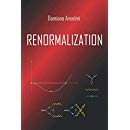In the context of field theories with complex poles, we scrutinize four inequivalent ways of defining the scattering amplitudes, each forfeiting one or more tenets of standard quantum field theory while preserving the others: (i) a textbook Wick rotation by analytic continuation of the external momenta from Euclidean to Lorentzian signature (no optical theorem), (ii) the Lee–Wick–Nakanishi prescription, integrating along a certain contour in the complex energy plane (no Lorentz invariance), (iiii) the fakeon prescription, where, in addition, spatial momenta are integrated on a complex path defined by the locus of singularities of the loop integrand (no analyticity of the amplitude) and (iv) to work directly on Minkowski spacetime, which violates the optical theorem and also bars power-counting renormalizability. In general, mixed Euclidean-Lorentzian prescriptions for internal and external momenta in loop integrals break Lorentz invariance, regardless of the type of masses involved. We conclude that, of the above four options, only the fakeon prescription is physically viable and can have applications to quantum gravity.
J. High Energy Phys. 05 (2025) 145 | DOI: 10.1007/JHEP05(2025)145
Embedded PDFFullscreen PDF view

 Quantum Gravity
Quantum Gravity 


